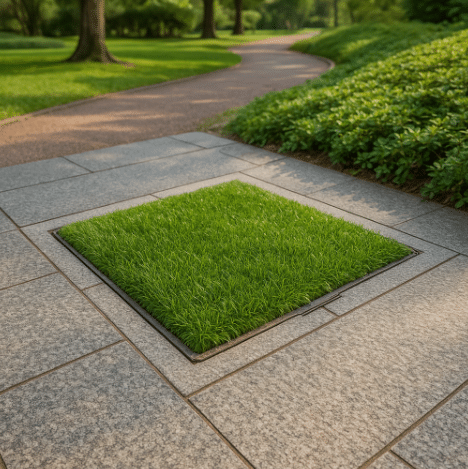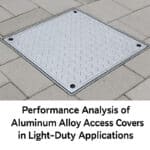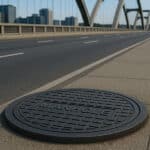In modern urban planning, parks serve as vital green lungs that enhance environmental quality and public well-being. Within these green landscapes, infrastructure components such as manhole covers must balance functionality with visual discretion. Consequently, the invisible design scheme for park landscape manhole covers has emerged as a leading solution that seamlessly integrates utility elements into natural surroundings. This article explores the principles, advantages, and implementation strategies for invisible manhole cover designs in park environments.
Understanding the Need for Invisible Manhole Covers in Parks
Traditional manhole covers often disrupt the visual harmony of landscaped environments. Although functional, their industrial appearance contrasts sharply with the aesthetic goals of parks and recreational spaces. Moreover, visible covers can interrupt walking paths, posing tripping hazards or drawing unwanted attention. Therefore, cities are turning toward landscape-integrated manhole covers that blend with the natural setting while maintaining accessibility and durability.
Key Principles of the Invisible Design Scheme
To achieve visual integration without compromising function, designers follow several key principles:
- Aesthetic Camouflage
Invisible manhole covers use materials, textures, and patterns that match the surrounding pavement, grass, or stone. This minimizes visual intrusion and preserves the park’s natural feel. - Material Consistency
The cover surface often mirrors the nearby ground materials, such as granite tiles, artificial turf, or resin-bound gravel. This ensures design continuity across the park landscape. - Load-Bearing Performance
Despite their discreet appearance, these covers must support heavy foot traffic, maintenance equipment, and in some cases, emergency vehicles. Reinforced materials like ductile iron or composite bases are essential. - Accessibility and Safety
While remaining visually discreet, the cover must allow easy access for maintenance personnel. Anti-slip finishes and secure locking mechanisms ensure safety and prevent vandalism.
Types of Invisible Manhole Covers for Parks
Park-specific manhole covers come in various types based on the location and design intent:
- Grass-Infused Covers: These include real or synthetic grass on the surface, ideal for lawns and open green areas.
- Stone Inlay Covers: Often used in paved walkways, these are filled with the same decorative stone used in the surrounding path.
- Modular Resin Covers: Lightweight and easy to install, resin covers blend well with porous or composite ground treatments.
- Custom-Pattern Castings: Ductile iron covers designed with leaf, tree, or floral patterns can enhance the thematic design of botanical or sculpture parks.
Implementation Strategy for Urban Planners
To ensure success, a systematic implementation process is essential:
- Site Assessment
Begin by analyzing soil conditions, load requirements, and the landscape theme. This data informs the choice of material and design. - Material Selection
Choose materials that balance strength, weight, and camouflage properties. Composite materials are excellent for corrosion resistance, while ductile iron offers superior strength. - Design Collaboration
Engage landscape architects, civil engineers, and utility departments early. A collaborative design process ensures that covers align with both utility and aesthetic goals. - Standardization and Maintenance Planning
Standardizing cover sizes and locking systems facilitates easier replacement and inspection. Maintenance teams should receive training to handle invisible designs without damaging the surface treatment.
Benefits of the Invisible Design Scheme
Implementing invisible manhole covers in park landscapes yields multiple benefits:
- Visual Harmony: Blending infrastructure with natural elements enhances the user experience and maintains landscape integrity.
- Public Safety: Flush, anti-slip surfaces reduce the risk of accidents.
- Durability: Modern materials withstand environmental stress, ensuring long service life.
- Theft Deterrence: Discreet design and locking systems reduce the likelihood of theft or vandalism.
Conclusion
The invisible design scheme for park landscape manhole covers is a forward-thinking solution that meets the dual demands of functionality and aesthetics. By using innovative materials, thoughtful design, and strategic planning, cities can create safer, more beautiful public spaces. As urban green infrastructure continues to evolve, such approaches will play a critical role in shaping sustainable and user-friendly environments.
FAQs
Q: What materials are commonly used for invisible manhole covers in parks?
A: Materials such as ductile iron, composite resin, reinforced concrete, and decorative inlays (stone or turf) are commonly used depending on the park’s design and load requirements.
Q: Are invisible manhole covers more expensive than traditional ones?
A: While the initial cost may be higher, long-term benefits such as reduced vandalism, improved aesthetics, and lower maintenance justify the investment. Brands like Xinghua Casting offer high-quality, cost-effective options that combine performance with visual integration.
Q: How do these covers affect maintenance efficiency?
A: Properly designed invisible covers maintain accessibility and often include integrated lifting tools or access points that simplify inspection and repair work.
Q: Can invisible manhole covers be customized?
A: Yes. Customization allows integration of logos, patterns, or specific materials to match the landscape theme.
Q: What makes Xinghua Casting’s manhole covers ideal for park use?
A: Xinghua Casting provides robust, aesthetically adaptable manhole covers at competitive prices, combining quality engineering with eco-sensitive designs suitable for public landscapes.





